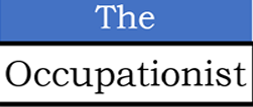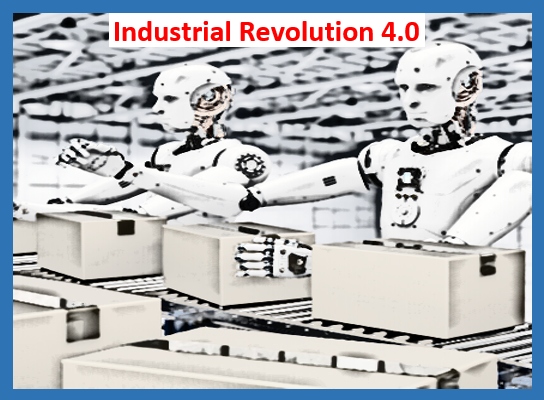We are witnessing IR 4.0 (the 4th industrial revolution) and Artificial Intelligence (AI), an often heard term these days is a part of it. AI is still in its infancy, and as perceived by workers, a robot is its partner in crime. We yet don’t know its capabilities. The experts are harnessing its potential and the common man is worried about losing their jobs, job security of future generations as well as its effect on health both physical and mental.
AI-based technology is no less than a nuclear bomb in wrong hands and deepfake is like a dirty bomb in the hands of miscreants.
In the future of jobs, no one knows who will win and who will lose. Job safety may improve due to AI and other IR 4.0 technologies, however, at the moment not much has been thought about its impact on the health of workers – both physical and mental.
It is important to bear in mind that AI is a ruthless tool devoid of human emotions. It has no idea about compassion. It cannot empathize. Hence, before marketing the goodness of AI for the public, one should think about its public and societal harms. No technology should create ill-health and unrest in society.
Before 2014, if you searched the term “Industry 4.0” in Google, it was practically non-existent, but everything changed around 2019 with Covid giving a big kick to IR 4.0 to gallop where it is today! The salient features of IR 4.0 are improved connectivity, advanced analytics, automation, robotics, complex engineering and technology for cheaper, better, faster manufacturing etc.
AI is still in its infancy, and as perceived by workers, a robot is its partner in crime.
In 2006, the Boliden’s Garpenberg zinc mine, near Stockholm in Sweden where mining is happening since 375 B.C., was struggling to compete. In 2013 Boliden started transforming its operations with automation and data, and is now one of the world’s most productive zinc mines. They also employ robots for mining.
Jenny Gotthardsson, general manager at Garpenberg said, “We have a way to go. There’s a big possibility of working 24 hours a day with more automation.” Some of the workers will be retrained for the new high-tech jobs but full automation will reduce jobs overall. Kristofer Ruth, a miner who has worked for 11 years, rarely goes to the mines. He manipulates a joystick that shovels ore into an automated truck about 800 metres below.
The worker may be safe with better health and safety at work due to AI but is not sure if the job will continue. The worker is not only concerned about the present job but also of jobs for future generations. Hence, there may be opposition from trade unions while implementing technologies associated with IR 4.0.
In future it is possible that IR 4.0 technologies will be able to prevent work-related (occupational) illnesses; for example, it may prevent musculoskeletal disorders by wearing a robot that will support human strength.
Deep-learning algorithm may help to detect human behavior patterns by using security cameras. If a dangerous situation is recognized, the relevant system can alert the operator and the safety team immediately to prevent an accident.
The worker may be safe with better health and safety at work due to AI but is not sure if the job will continue. Any increase in employment instability can increase mental illness.
IR 4.0 will accelerate globalization and consequently the working conditions.
Globalization increases night shift working, especially in developing countries. Shift work disrupts circadian rhythm and increases the risk of certain cancers (colorectal and breast), stroke, heart attacks, depression and even diabetes.
Shift workers tend to eat more erratically, snack more at night and consume a lot more unhealthy foods with more calories as per a study published online in Advances in Nutrition.
To minimize circadian rhythm disturbances, it is necessary to maintain a normal biological clock by taking the following steps:
- Reduce light exposure as much as possible after leaving work if intending to go immediately to sleep once at home. Wearing blue light-blocking glasses or using blackout shades in your bedroom is helpful, says Eric Zhou, an assistant professor in the Division of Sleep Medicine at Harvard Medical School.
- On days off, make enough time for sleep
- Have a consistent shift work schedule
- Talk to your line manager/employer requesting to schedule for fewer overnight shifts. “You can also ask your doctor to make a case for you to be moved off these shifts or have more flexibility,” Zhou says.
Zhou further says, “The goal is to preserve as strong a circadian rhythm as possible under the abnormal schedule shift work requires.”
AI causes other issues like stress due to fear of losing jobs to robots or other complex systems. Any increase in employment instability can increase mental illness.
AI is a ruthless tool devoid of human emotions. Before marketing the goodness of AI for the public, one should think about its public and societal harms.
AI leads to platform companies and workers register in more than one such company as they do not have a fixed job. These jobs are on-demand and workers are not protected by labor laws in most countries. To protect health and wellbeing of such workers (also called gig workers), government intervention and enforcement is necessary.
Role of Occupational Health to manage work-related health fallouts due to IR 4.0?
- Make a case for implementing the latest versions of decent work in corporations. The global bodies defining decent work should change the definition of decent work based on ongoing research.
- Aggressive focus on identifying and preventing work-related diseases rather than on treatment as in some cases treatment may not be effective.
- Strong advocacy with the governments to be quick to frame labor-friendly laws and enforce them to protect worker health.
The difference between Human Intelligence (HI) and AI is the latter’s inability to discern and judge. And that is why OHS (Occupational Health and Safety) professionals must demonstrate compassion, empathy and ability to make rightful decisions based on experience and situational awareness, else AI will take over a large part of OHS.
In short, OHS will have to anticipate, innovate and coordinate to be relevant in the years to come.
The technologies of the fourth industrial revolution (IR 4.0) which includes AI can be dangerous in wrong hands as it can terrorize communities and equally dangerous in right hands if its societal harms are not accounted before its implementation. The societal harms are increase in joblessness and health issues (both physical and mental) in those working with AI systems.
AI-based technology is no less than a nuclear bomb in wrong hands and deepfake is like a dirty bomb in the hands of miscreants.
Hence, the expectations from governments are to urgently have a global framework of understanding to monitor ethical and transparent development of AI and other such technologies and have strong enforcement regarding its misuse, much like the regulatory boards for nuclear energy.
The happiness because of achievements due to AI now should not turn into societal chaos in future and lead to dangerous conflicts. Regulations are important and are urgently required.
India is among the top countries in AI applications and research. While being a part of global framework to develop standards, India must voice concerns and prevent any application of AI that can disrupt physical and mental health as the cost of managing them in a populous country far outweighs the gains.
For more info, contact
____________________________________________________________________________________________
Dr Ajay Sati is an Occupational Health physician who prefers to describe himself as an Occupationist, to denote, ‘an expert in diseases and other concerns of occupations.’ Dr Sati has managed health and wellness programs in industries he worked, like the atomic energy, and energy (oil & gas) in India and overseas. An experienced virtual consultation expert he was involved in many greenfield and brownfield projects providing inputs from health point of view.



